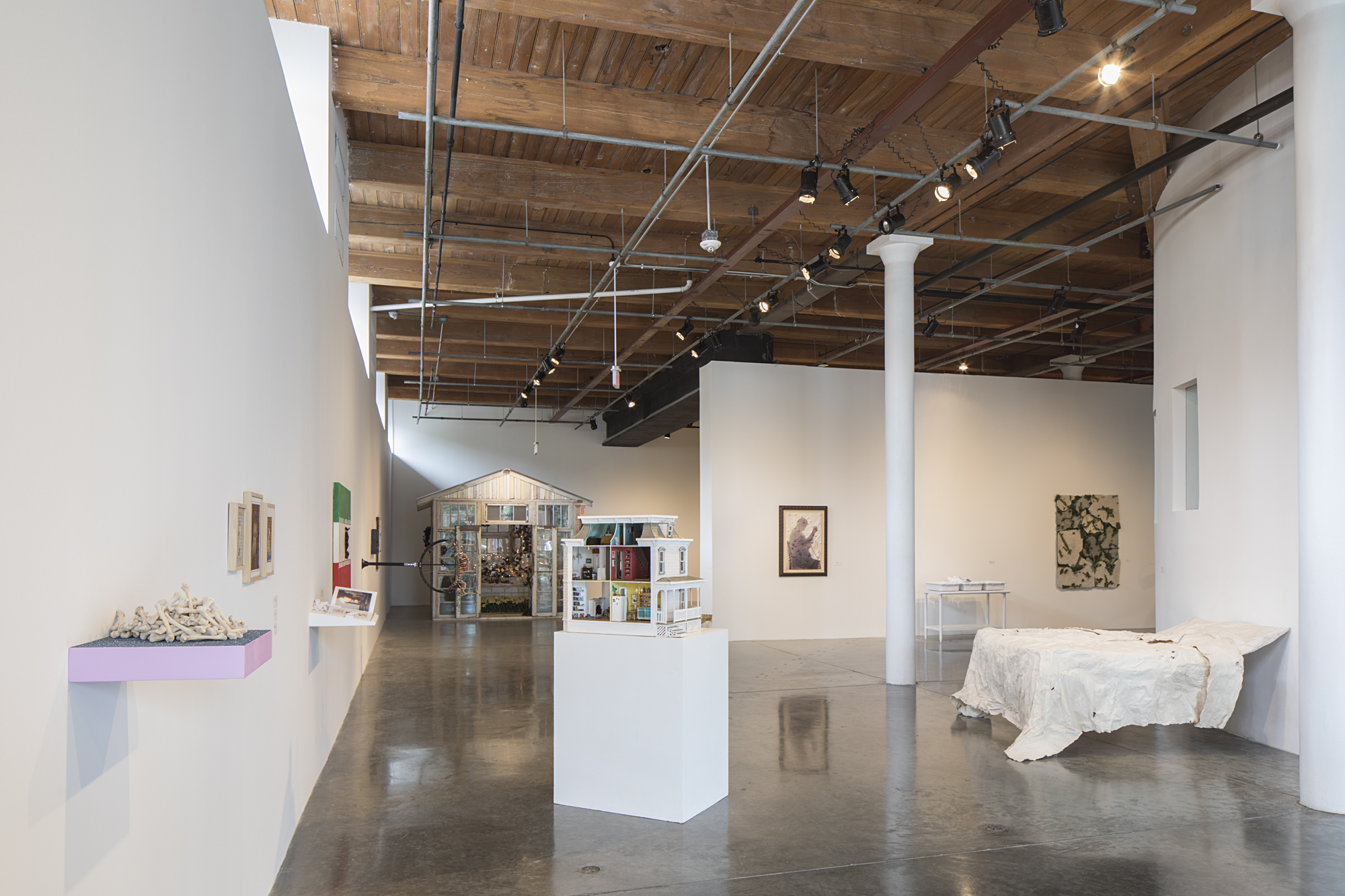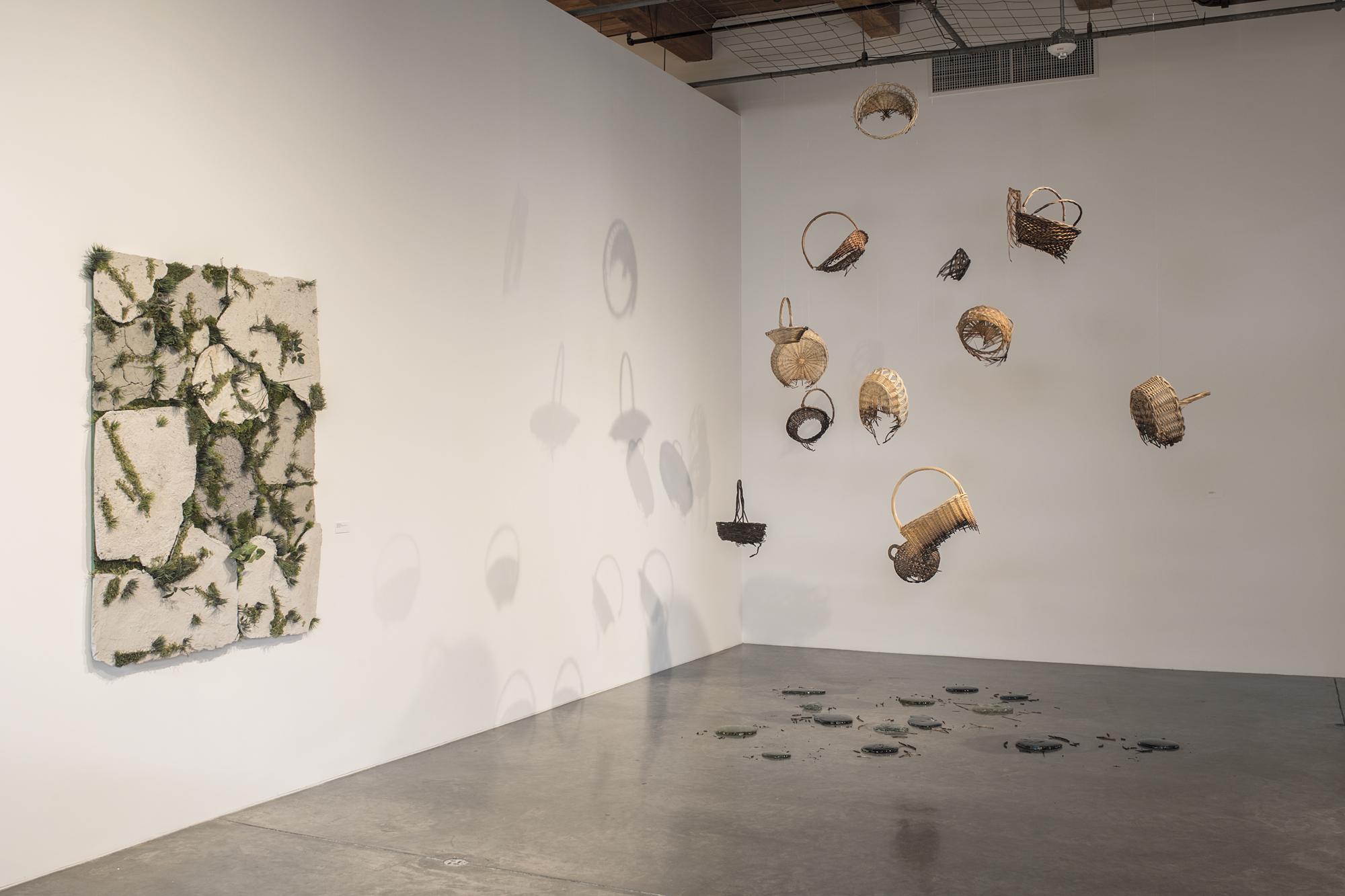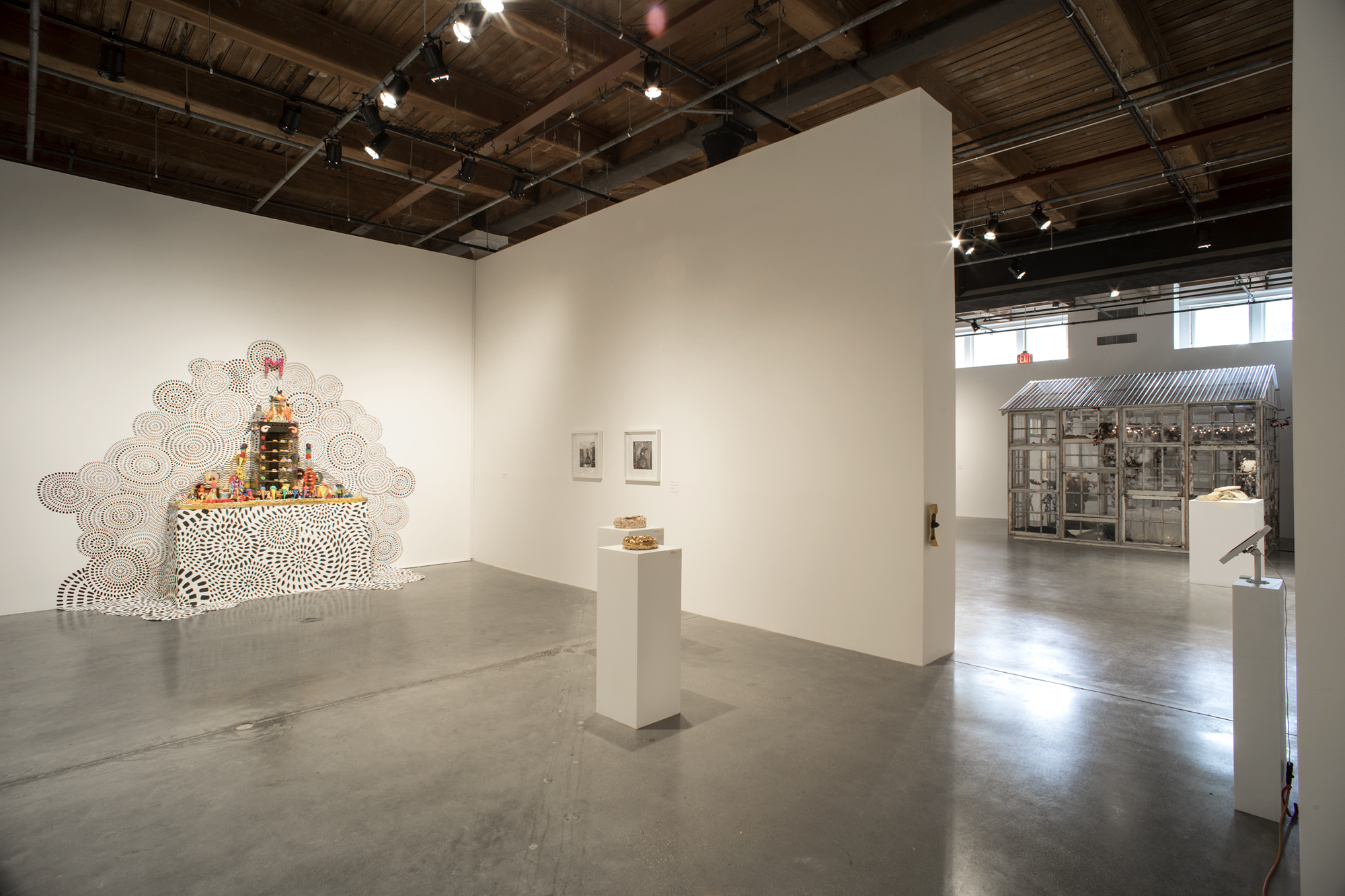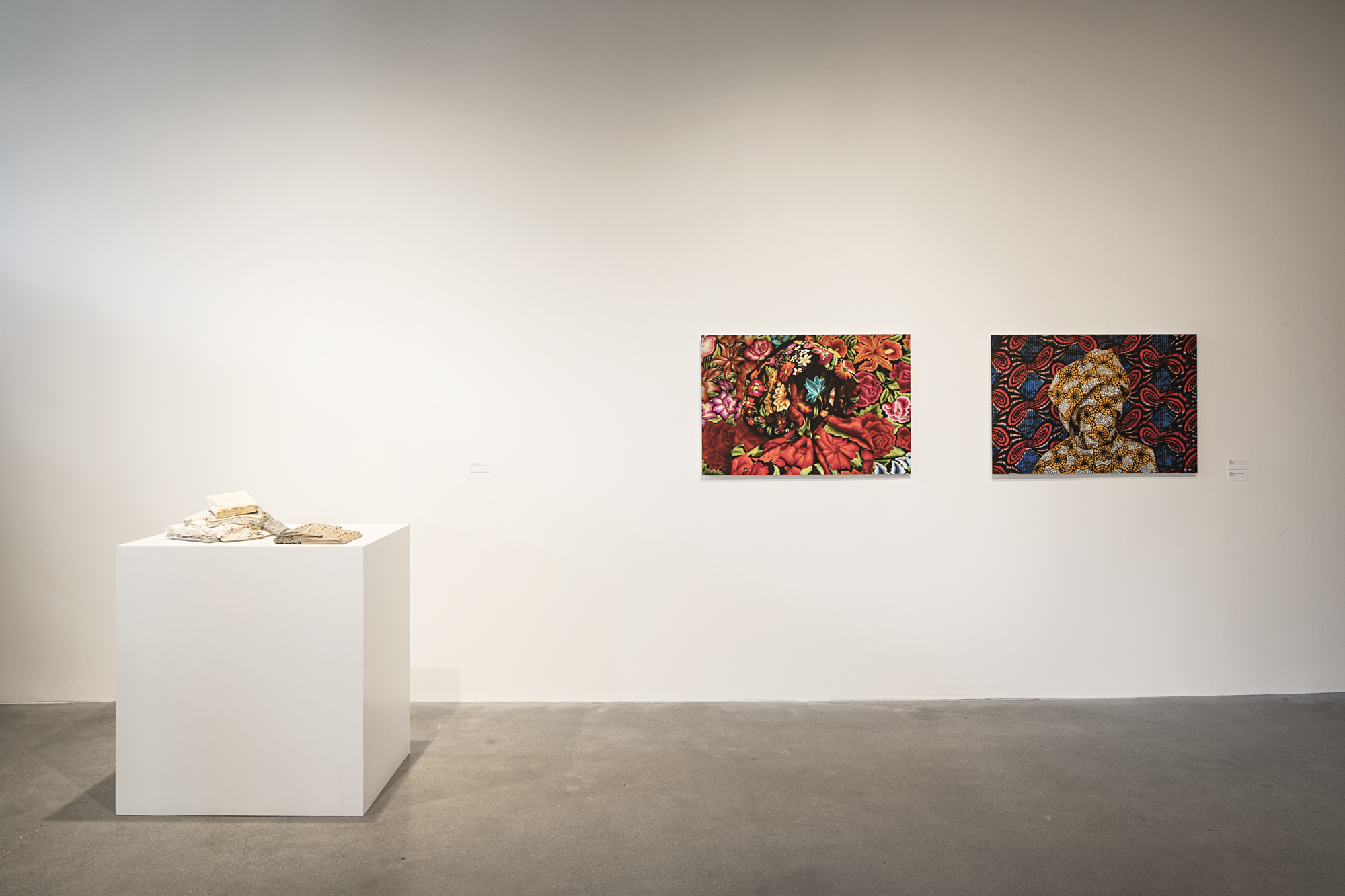Most people think that shadows follow, precede or surround beings or objects. The truth is that they also surround words, ideas, desires, deeds, impulses and memories. —Elie Wiesel (1928–2016)
It is only in the world of objects that we have time and space and selves. —T. S. Eliot (1888–1965)
Opening a season of programming that celebrates New Orleans’s tricentennial, the Contemporary Art Center’s annual open call exhibition presents the work of over 30 regional artists.
As a port city, New Orleans has long served as a departure, respite, or destination point for artists, intellectuals, merchants, and romantics. As we celebrate the three hundred year history as a city of journeymen, we recognize our own history in global patterns of geographic mobility. From refugees fleeing conflict, or facing oppression and natural disasters, to immigrants seeking opportunities and freedoms in new regions, the nomad presents as contemporary archetype.
And with him, across national borders and difficult passageways, (s)he brings mementos. Despite, or perhaps because of, their fragility, these objects accrue heightened significance as carriers of cultural and personal history. They serve as signifiers of ethnic, religious, and regional association, transmitting memories of particular landscapes and traditions.
This exhibition presents the work of artists who examine the relationships of objects— which hold importance beyond their physical form—to experiences of places and cultural identities. Artists were asked to submit works that evoke their own sense of emotionality, sacredness, and personal connection to their cultures and beliefs through objects found and made. When faced with conflict or duress, what sacred objects or physical memories would be the first in hand and tucked away for safekeeping? What forms serve to tell your cultural story to the next generation? What is the history communicated by your chosen medium? Are objects singular and distinctly self-reflective, or do they portray individual history as copy, reproduction, or commodity in a global economy of exchange? How do histories of colonization and cultural domination figure in the objects with which we most closely identify?
This exhibition is organized by the Contemporary Arts Center, New Orleans, and curated by Aaron Levi Garvey. Support for this exhibition is provided by the Sydney & Walda Besthoff Foundation, The Helis Foundation, the Greater New Orleans Foundation, and the Welch Family Fund in memory of Walter Wade Welch.
ABOUT THE CURATOR
Aaron Levi Garvey, Independent Curator and Co-Founder of Long Road Projects
Aaron Levi Garvey is an Independent Curator, museum professional, writer, lecturer, and arts consultant, who has worked on a multitude of platforms within the public, private, and corporate arts community, both nationally and internationally. Garvey has worked closely with notable artists such as Ryoji Ikeda, Tameka Norris, Gamaliel Rodriguez, Natalie Krick, Rashaad Newsome, Jonah Bokaer, Alec Soth, and Rachel Rossin. He has contributed essays, texts, interviews, and lectures on contemporary art’s culture and its market through various outlets. In late 2014, he was selected as an Evaluator for Creative Capital’s 2015 Visual Arts Grant Award review panel. Currently, Garvey sits as the guest curator of exhibitions at the Savannah College of Art and Design’s Museum of Art. Some of his select upcoming 2016–17 exhibits include Saya Woolfalk’s To Dream The Electric Dream, and Jose Davila’s Primary Structures—a Chiharu Shiota site-specific installation. Most recently, Garvey has curated and written the catalog for We Are What You Eat, the inaugural art exhibition at the United Nations headquarters in New York City, which opened in early May 2016 and co-curated the Atlanta Biennial (ATLBNL): Recent Correspondence at the Atlanta Contemporary in August 2016.






